Introduction
Jeff Wall is a contemporary photographer who was born in Vancouver, Canada, in 1946. In the 60s, he studied art history and became interested in the experimental art scene, and taught photography himself. Later, Wall received a Bachelor’s and Master of Arts degrees, after which he conducted postgraduate research. In 1969 he participated in group exhibitions in Vancouver, Seattle, Washington, and London (Jeff Wall).
Wall’s first one-man exhibition was held at the Nova Gallery in Vancouver in 1970 (Jeff Wall). In his works, the photographer depicts everyday life and contains references to media, art, and socio-economic issues. Wall also actively explores the film and literary aspects of photography through narrative and composition. The photographer is associated with the movements of contemporary and postmodern art.
Career and Works
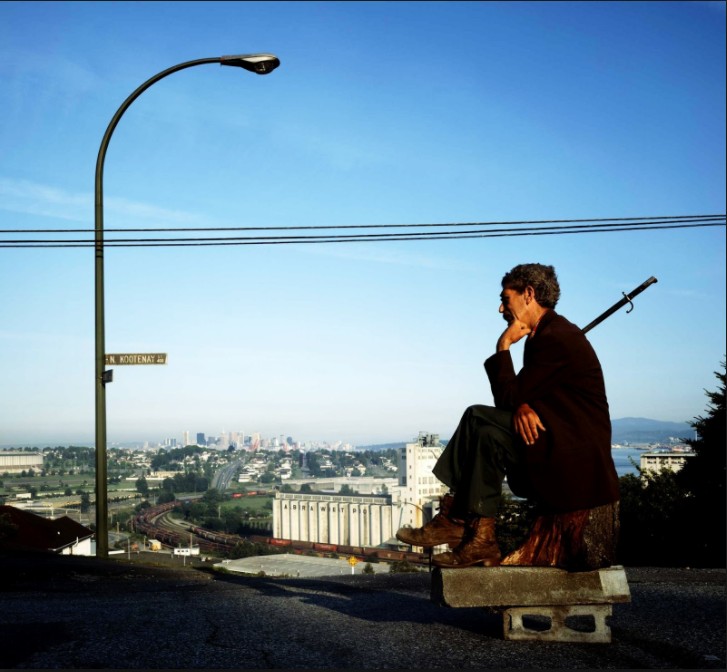
Early in his career, Wall experimented with conceptual art, seeking new ways to express his ideas. After his first exhibition, Wall did not pursue art until 1977, when his first backlit photo-transparencies appeared (Newman 85). Many of the photographer’s works contain references to classical pieces of art, such as The Thinker (1986), which repeats Rodin’s sculpture of the same name. Most of the photographer’s works are staged, depicting everyday scenes related to the problems of representation and the history of art. He often refers to Hokusai, Manet, and Velazquez, as well as Mishima, Kafka, and Ellison (Merritt 9; Newman 83-83). Thus, Wall’s work strives to highlight art in the modern day-to-day world.
In contrast to other photographers who often create a series of works, Wall tends to present single pieces. However, he occasionally uses diptychs and triptychs that form the shared scene (Campany para. 4)
Summer Afternoon
One of the photographer’s most striking diptychs is Summer Afternoon (2013). The two pieces are different in size but aligned with the tops of the doorways; Wall also uses the directed light on the right in both photos, which combines them to create a panorama (Dufour 2). The photographer often mentions in interviews that he does not tell the story in his pieces but allows the viewer to reconstruct it (Jeff Wall talks). The same is the situation with this diptych, in which the author indicates that this is one and the same space, but with different people and probably at different times. However, Wall does not specify at what point in time people are and how they are related to each other.
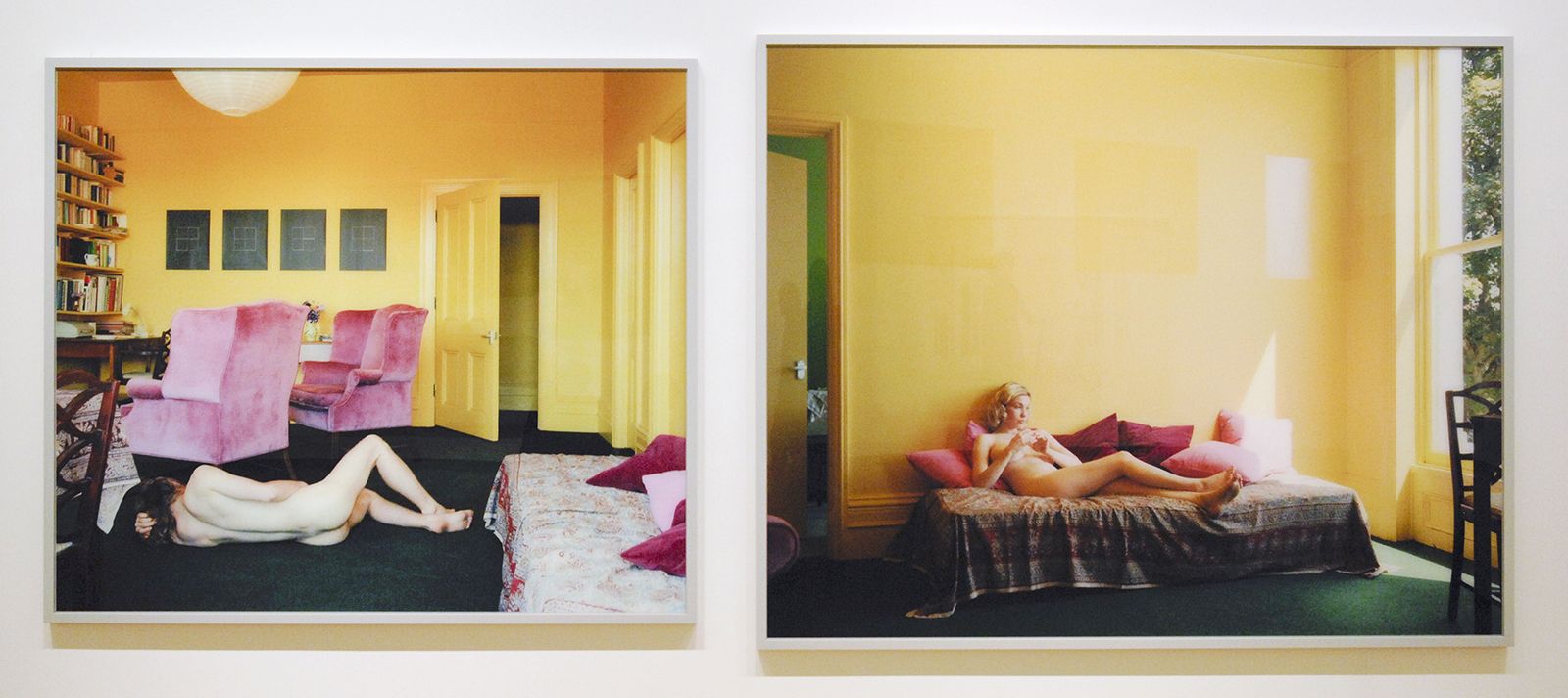
As always with Wall’s works, it is necessary to view his photographs from the point of view of art. Dufour notes that “the woman reminiscent of Goya’s La Maja Desnuda…The man could be a reverse angle of Lucian Freud’s Naked man with rat” (3). However, again, these plots are placed in a daily setting, and the title gives the viewer an idea of the context of the events. Thus, the main theme of Wall’s work may be his endless admiration for the reality of modernity. In particular, the figures are depicted in an abstract, self-absorbed state. They are daydreaming or reflecting. Perhaps the photographer emphasizes that static figurines, upon closer inspection, can reveal entire plots and stories, opening up opportunities for interpretation. This aspect makes everyday life completely extraordinary and unique at every moment.
I Giardini/The Gardens
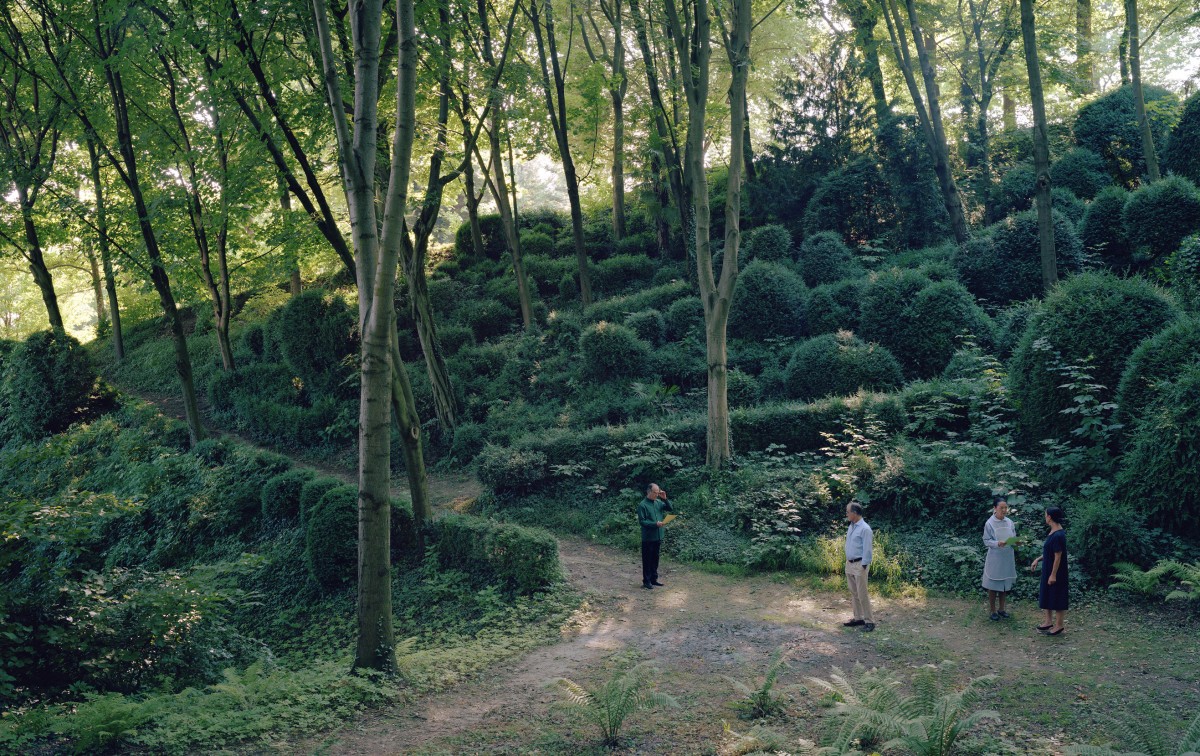
I Giardini/The Gardens is the only Wall’s triptych that was created in 2017. The work consists of three separate pieces, which create his “first real narrative image series” (Bell para. 2). All three photographs included in the triptych are united by a common color scheme of green and also depict figures of people against the background of trees and bushes. Wall often refers to landscapes in his works and captures nature and places people in them. This is another theme of his photographs, as he is particularly interested in portraying contemporary issues of indigenous people in Canada. Probably, such a connection with landscapes for the photographer is a reference to the natural order and origin of man. The first part of the triptych is Appunto/Complaint, in which four people – two men and two women – are captured in a forest landscape.
Most of the space is occupied by trees, bushes, and a pathway, while the figures are miniature. It can be noticed that between the lugs, there is some interaction in groups of two. They are discussing something; men are at a distance from each other, while women are close. Wall again addresses human relationships but does not directly tell the story that unfolds. The viewer can only guess what is happening in the photograph. People occupy the right side of the picture, which opens up the perspective of movement. Thus, the photographer indicates that they are at the beginning of something, and further, the viewer is waiting for the development of the plot. People also stand at the crossroads as if making some important decision.
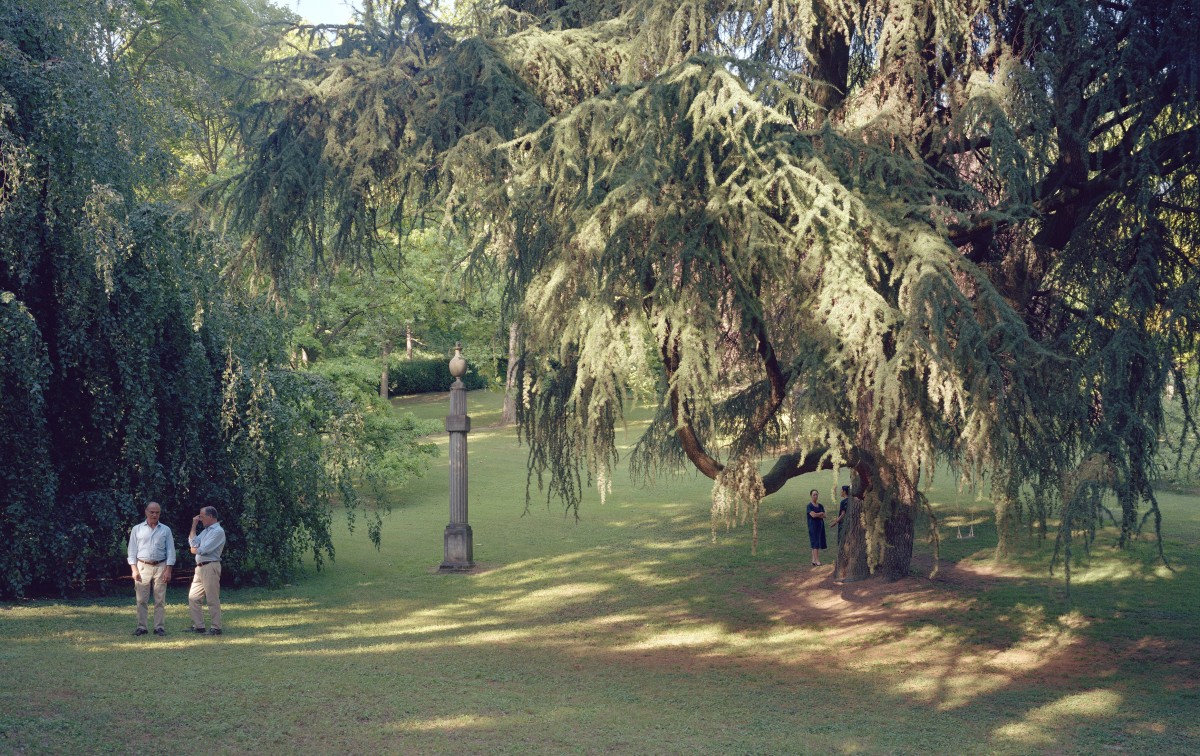
The second part of the triptych is Disappunto/Denial, where Wall captured two men and two women in an already more civilized garden landscape. The figures are in different parts of the photo – the women are almost hidden behind the tree, while the men are clearly visible on the left side. Again, most of the photo is taken up by trees, but the color scheme is already warmer, with more yellows and browns. It is noteworthy that in both photographs, the figures are in shadow, although the viewer can notice the rays of the sun making their way through the crowns. Now both men and women are close to each other in groups and are clearly discussing something among themselves.
As in the Summer Afternoon (2013) diptych, Wall clearly distinguishes between a male character and a female character. Compared to the first piece of the triptych, the distance between the figures increased, and they broke into pairs. Wall is probably trying to illustrate the process of difficulties in communication between people and how they deal with them. As the titles suggest, men and women find an adviser in problems in the person of their sexes but do not interact with each other. Probably, within the framework of this diptych, one can serve as, in the opinion of the photographer, overcoming conflicts in a pair of people. Perhaps he illustrates the establishment of an even deeper connection, a long-term relationship that is formed through such moments. This theme is also the main one for Wall because it often depicts the direct interaction of people of different genders in moments of closeness and distance.
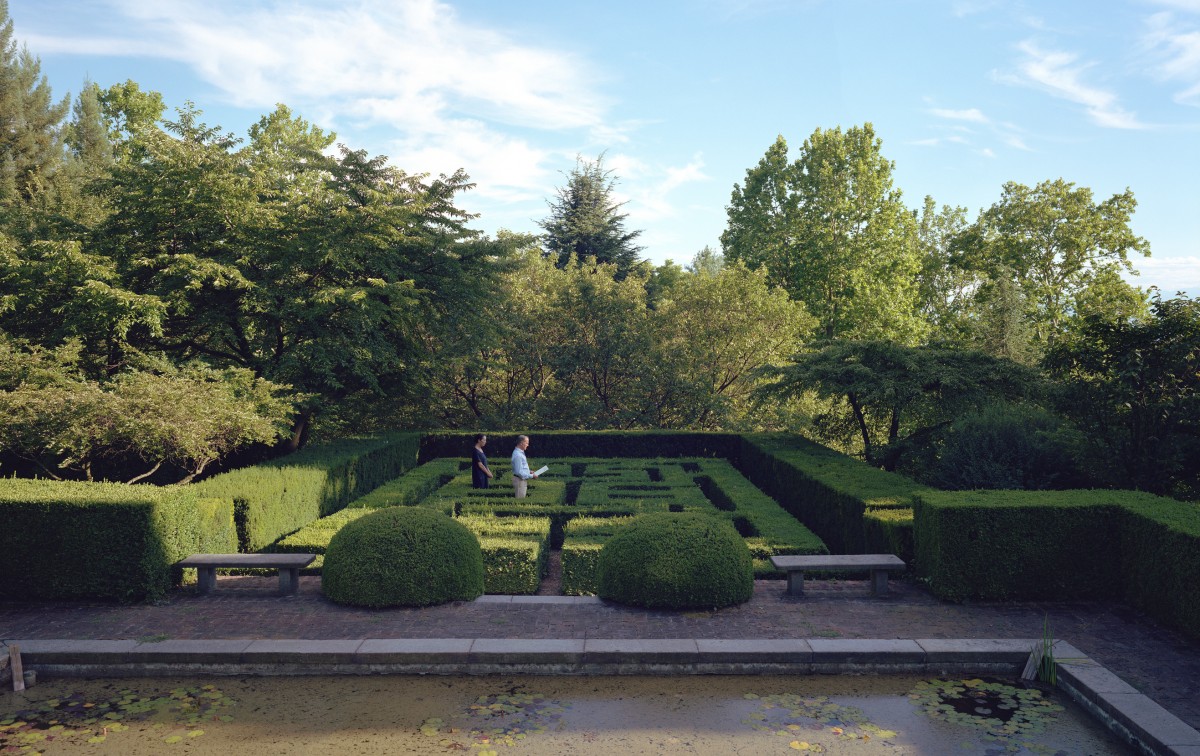
In the third photo of the triptych, called Diffilda/Expulsion, only two figures remain – a man’s and a woman’s. They are located in an even more well-kept garden with a labyrinth of bushes, benches, and a fountain. This evolution of the environment probably also reflects the development of relationships between the characters. Wall shows a male and female character walking together in a maze, clearly trying to find a way out of it.
They are close to each other and follow each other, which marks the renewal of their relationship. The photographer probably seeks through nature to portray the context in which relationships develop. In particular, the first part of the triptych depicts a forest that no one cares for. It is wild and untouched by man. In the second photo, the viewer sees an already more inhabited garden, where human activity is visible, but it still looks natural. In this photo, Wall already depicts a completely domesticated, well-tended garden that people are working on.
Thus, within the framework of the triptych, the viewer can observe the development of relations, which, according to the photographer, need to be worked on as well. The message Wall conveys is that two people need to move in the same direction and take care of communication in order to maintain a relationship. The evolution of landscapes reflects the evolution of characters who move from realizing a problem to working on solving it. Thus, the theme of human relationships, in particular romantic ones, is one of the main themes in the work of the photographer. He shows dynamic scenes of changes that occur between people at different points in time, which gives his photographs depth and allows him to convey meaning.
Picture for Woman
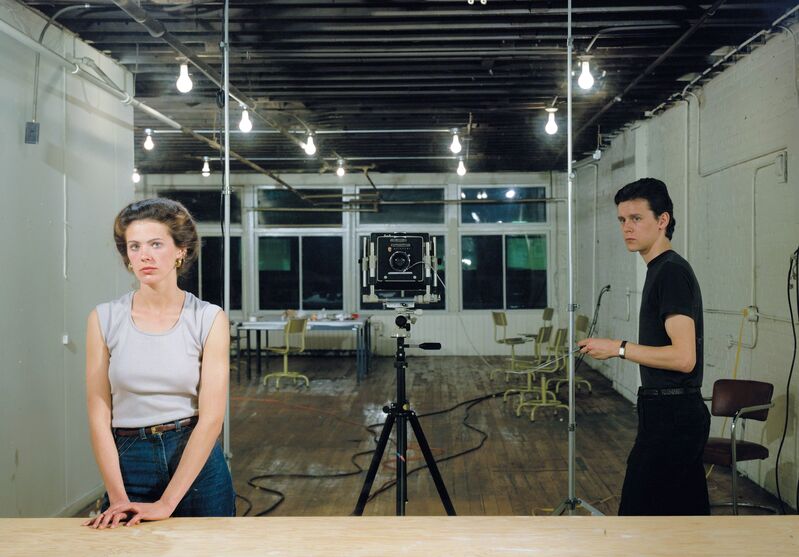
Picture for Woman (1979) is one of Wall’s early works and well illustrates how he uses artistic plots and transforms them to give new meaning. This photograph is the third lightbox transparency of the photographer, which he was fond of in the early period of his work (Campany 3). It is noteworthy that Wall in this photograph seeks to deliberately emphasize the staged nature of the space, albeit with an allusion to the classroom. Wall uses a forward frontal perspective to place characters in a clearly marked box that the viewer looks at from the outside. The foreground of the photo is also more illuminated than the distant space, which makes the woman’s figure stand out from the rest of the objects.
The photograph, as it were, depicts everything in the reflection of the mirror, creating perspective and added depth. Wall borrowed this technique from Manet’s painting A Bar at the Folies-Bergère (1882), essentially creating a reproduction. The male figure in the photograph is Wall himself, who, as a photographer, gazes at the model of his shooting. Thus, using perspective, light, positioning, the central placing of the camera, the studio environment, and including himself in the scene, the photographer creates a process of making a photograph for the viewer. Thus, without analyzing all these details of the form, the viewer cannot fully understand the content of the photo. Wall uses the form in Picture for Woman as the primary medium of meaning that creates the plot. At first, the viewer sees only the reconstruction of the famous work of art but noticing more and more details of the composition, the transformation of the content takes place.
Mimic
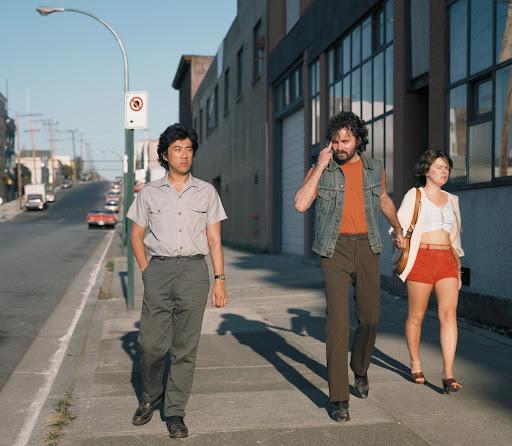
Mimic (1982) is another of Wall’s early works that attract much attention. Walter Benn Michaels notes that the subject of this photograph is racism and the hostile gestures of people towards other races (1). However, Wall tries to distance himself from the subject matter and discussion of the political and social agenda in future works (Michaels 1). The composition of this photo is simple enough and does not trumpet deep analysis to highlight the content. First of all, the Wall depicts an Asian man with a pair of White people walking to his right. The white man has a decidedly unfriendly sidelong glance at the Asian, highlighting the anti-Asian racism in Canadian society that concerned Wall.
In this case, the form also helps to reveal content that the viewer can comprehend. First and foremost, the perspective and positioning of the characters in the frame make the Asian character stand out. It is placed closer to the center and moves almost directly toward the viewer, and it also has better lighting. Thus, Wall distinguishes him as the center of attention in the photograph, emphasizing that the gaze of both the viewer and the White man on the right is directed precisely at him. Additionally, the setting of the photo gives the impression of a lucky street shot, regardless of the staging (Michaels 4).
Thus, through such a presentation, Wall emphasizes that the situation is of a day-to-day nature. Considering such details of the form, the viewer can once again construct a plot and create a story that the photographer indirectly tells. The elements of perspective, light, setting, and positioning create certain associations and emphasize those elements that are important for creating the content of the shot.
Recovery

Recovery (2017-2018) is one of the most recent works of the photographer and the most atypical for Wall. The form is probably the most important in this photography for expressing content than in all of his other works. Recovery combines drawing and snapshot of a man to create a story. In the foreground of the canvas, Wall placed a photograph of a man sitting on the ground in a park. Around him are people engaged in various activities, but they are all completely flat painted, while the man is only partially. Thus, there is a mixture of reality and illusion. As Wall itself notes, this is “a picture of something that can’t exist, and yet there it is” (qtd. in Seymour “Jeff Wall Returns” para. 6). It is also noteworthy that the entire environment is depicted in bright, vibrant colors, while the man is presented in paler colors.
The man is presented as dazed and distracted, which suggests that his perception is not entirely clear. Probably, everything that happens around them is a product of his imagination, which Wall emphasizes through a combination of techniques. The figure of a man can also be a reference to the photographer himself, who, unlike his contemporaries, is immersed in the history of art and, as it were, lives in an illusory world (Seymour “Jeff Wall’s Monumental” para. 7).
Thus, through the form, the author opposes the central figure to the environment. Using a drawing technique, he emphasizes the unreality of what is happening around him but also claims that the character is a real person living in the real world but distorted with imagination. In this case, the form most clearly reveals the content of the photograph, making a sharp difference between the character and the landscape.
Conclusion
In conclusion, I would like to summarize how Wall uses conceptual and formal tools to convey meaning in his works. To be honest, when I first looked at the author’s photographs, I was confused that I could not immediately determine the main theme of his work. Wall stands out from the rest of the contemporary photographers precisely for its academicism and the ability to mix reality and art. In my opinion, this makes him unique from a conceptual point of view, as his pictures work on several levels with the perception of the viewer. First of all, they represent everyday scenes with which everyone can associate themselves. However, when analyzing formal tools, it becomes clear that all shots are staged, which reveals the author’s intention.
In contrast to other photographers, Wall does not seek to reflect reality. He works to create it in his photographs. Thus, he is more close to an artist in a conventional sense than a photographer because he uses the camera not as a documentary tool but as an expressive one. Undoubtedly, Wall, in his early works, raises various social issues, but at the moment, he is more and more concerned about problems within people and their relationships.
I think this transformation fully reflects his path in which he was able to synthesize his expertise in the history of art and photography. It could even be said that Wall created photographic art as a medium of artistic expression. Staged shots allow him to fully control what kind of meaning this or that element conveys, which is impossible with documentary shooting. Wall does not describe reality through photography. He creates a narrative that people can perceive and interpret, which makes his work multi-level.
Works Cited
Bell, Graham. W. “Jeff Wall.” The Brooklyn Rail. Web.
Campany, David. “A Theoretical Diagram in an Empty Classroom’: Jeff Wall’s Picture for Women.” Oxford Art Journal, vol. 30, no. 1, 2007, pp. 7-25.
Camplany, David. “Newsletter: FT Weekend.” Financial Times. 2019. Web.
Dufour, Gary. “A Summer to Remember.” UWA Design School, 2016, pp. 24-27. Web.
“Jeff Wall.” Tate. Web.
“Jeff Wall Talks about His Photographs ‘Parent Child’, ‘The Gardens’ and ‘Recovery’ Which All Feature in His Exhibition at White Cube Mason’s Yard.” White Cube. Web.
Merrit, Naomi. “Manet’s Mirror and Jeff Wall’s Picture for Women: Reflection or Refraction?” Emerging Markets Journal, no. 4, 2009, pp. 1-16. Web.
Michaels, Walter B. “The Politics of a Good Picture: Race, Class, and Form in Jeff Wall’s Mimic.” Publications of the Modern Language Association, vol. 125, no. 1, 2010, pp. 177-184.
Seymour, Tom. “Jeff Wall’s Monumental Photographs Loom Large at White Cube.” Wallpaper. 2019. Web.
Seymour, Tom. “Jeff Wall Returns to His Painting Roots for New Work in White Cube Show.” The Art Newspaper. 2018. Web.